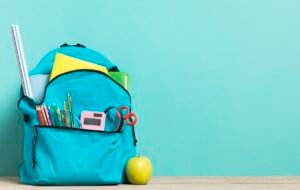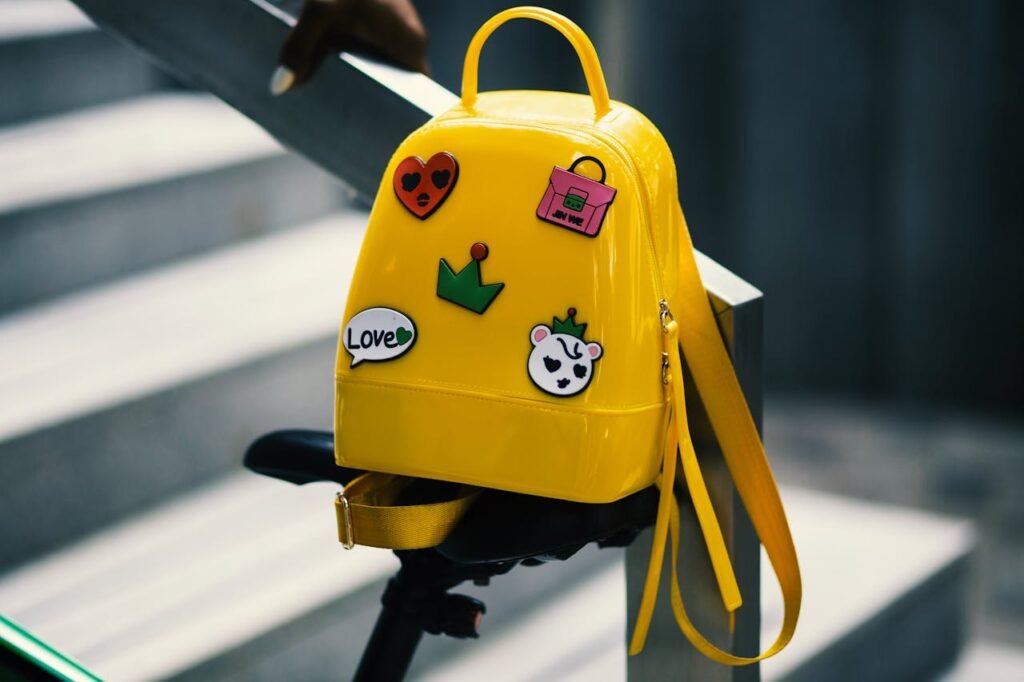All Parents are aware of their kid’s school bag. They want to choose the right school bag for their kids. But involves considering several factors to ensure comfort, safety, and practicality. Here is a comprehensive guide to everything you need to know about kids’ school bags:
Key Factors to Consider
Size and Capacity:
- Fit: The bag should be proportionate to the child’s body size. It should not be wider than the child’s torso or hang more than a few inches below the waist.
- Capacity: Ensure the bag has enough space to carry necessary items without being too large. A good rule of thumb is that the filled bag should not weigh more than 10-15% of the child’s body weight.
Weight Distribution:
- Compartments: Multiple compartments help distribute weight evenly.
- Pockets: Side pockets for water bottles and small front pockets for smaller items help balance the load.
Straps and Padding:
- Shoulder Straps: Should be wide, padded, and adjustable to distribute weight evenly across the shoulders.
- Chest and Waist Straps: Help stabilize the bag and distribute weight more evenly.
Material and Durability:
- Material: Choose lightweight, durable materials such as nylon or polyester. Waterproof or water-resistant materials are beneficial.
- Zippers and Stitching: Ensure zippers are sturdy and stitching is reinforced.
Safety Features:
- Reflective Strips: Enhance visibility in low light conditions.
- ID Tag: A place to write the child’s name and contact information for safety.

Types of School Bags
Backpacks:
- Traditional: The most common type, with two shoulder straps.
- Rolling Backpacks: Come with wheels and a retractable handle, suitable for heavier loads but less practical on stairs and uneven surfaces.
Messenger Bags:
- Worn across the body with a single strap. They are stylish but may not distribute weight as evenly as backpacks.
Tote Bags:
- Carried by hand or over the shoulder. Suitable for light loads but not recommended for heavy books and supplies.

- Carried by hand or over the shoulder. Suitable for light loads but not recommended for heavy books and supplies.
Health and Safety Considerations
Proper Fit and Wearing:
- Ensure the backpack fits snugly against the child’s back.
- The top of the backpack should be just below the shoulders, and the bottom should not extend more than a few inches below the waist.
- Use both shoulder straps to avoid uneven weight distribution.
Load Management:
- Regularly clean out the bag to avoid carrying unnecessary items.
- Place heavier items closest to the back to reduce strain.
Posture and Comfort:
- Encourage good posture by ensuring the bag is worn correctly.
- Check regularly for any signs of discomfort or strain.
Popular Brands and Models
JanSport:
- Known for their durability and lifetime warranty.
- Price Range: $30 to $60.
LL Bean:
- Offers ergonomic designs and high durability.
- Price Range: $40 to $70.
Herschel Supply Co.:
- Stylish designs with practical features.
- Price Range: $50 to $100.
Pottery Barn Kids:
- Customizable options with various sizes to suit different age groups.
- Price Range: $30 to $90.
Skip Hop:
- Fun, themed designs for younger children.
- Price Range: $20 to $40.
Maintenance Tips
Regular Cleaning:
- Follow the manufacturer’s instructions for cleaning. Most bags can be spot-cleaned with mild soap and water.
Check for Wear and Tear:
- Periodically inspect the bag for any damage to zippers, straps, or seams and repair as needed.
Proper Storage:
- Store the bag in a dry, cool place when not in use to prevent mold and mildew.

- Store the bag in a dry, cool place when not in use to prevent mold and mildew.
Recommendations to Mitigate Health Concerns
Choose the Right Bag:
- Size: The bag should be appropriate for the child’s size and age.
- Weight: The bag’s weight should not exceed 10-15% of the child’s body weight.
- Design: Look for ergonomic designs with padded, adjustable shoulder straps, and a padded back.
Packing Tips:
- Distribute Weight Evenly: Place heavier items closest to the back.
- Organize: Use compartments to distribute weight evenly.
Proper Wearing Technique:
- Both Straps: Encourage children to use both shoulder straps to distribute weight evenly.
- Adjust Straps: Ensure the straps are adjusted so the bag sits high and close to the body.
Regular Bag Checks:
- Clean Out: Regularly clean out the bag to remove unnecessary items.
- Check Weight: Periodically check the weight of the bag.
Promote Physical Activity:
- Strength and Flexibility: Encourage exercises that strengthen the back and core muscles and improve flexibility.
Educate and Monitor:
- Awareness: Educate children on the importance of carrying their bags properly.
- Monitor: Regularly check how children carry their bags and make adjustments as needed.
Use of Lockers or Storage:
- School Lockers: Utilize school lockers or storage to minimize the need to carry all books and supplies at once.
- Schedule Management: Plan the schedule so that only necessary items are carried each day.

When selecting a school bag, it’s essential to consider your daughter’s preferences, her daily needs for school, and any specific features or requirements you might have. Additionally, reading reviews from other parents can provide valuable insights into the durability and comfort of the backpacks you’re considering.

